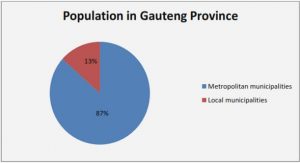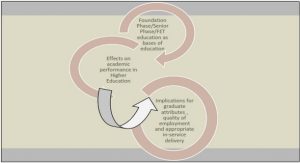Get Complete Project Material File(s) Now! »
Culture shock (school versus higher education)
Students, who transition to a higher education institution that incorporates a culture different from their own, have to adapt to social, educational and behavioural changes. Some new students may expect different circumstances, yet still have to contend with the demands of adjusting to an environment that is culturally alien to them. However, students who misguidedly assume that the new environment operates like the environment they knew during their high school years may experience what is known as a « culture shock » (Zhou, Jindel-Snape, Topping & Todman, 2008).
A majority of school leavers experience significant differences in teaching and learning styles between high school and higher education. Wangeri, Kimani and Mutweleli (2012) mention that most new students harbour feelings of anxiety toward their pending lives at a higher education institution. Such feelings may affect their physical comforts and senses of social security. Factors such as raised academic standards, course and subject difficulties, and demanding workloads are significant elements of their concerns (McGhie, 2017). High school learners are used to directive approach adopted by schools. To lessen the culture shock of a new experience in higher education, learners need guidance in terms of directing their own studying schedules and time management disciplines (McCoy, Smyth, Watson & Darmody, 2014).
Interpersonal relationships
The South African society is composed of several different cultural communities. Given this circumstance, young people will benefit from maintaining healthy relationships with other individuals from different communities. Students who are able to adapt to changes in cultural and social environments may enrich their own communities by being accepting of the influences of other cultural practices. Interpersonal relationships can be defined as a person’s ability to manage mutually beneficial relationships with others who are sharing a social or professional environment. Bar-On (as cited in Mangal & Mangal, 2015, p. 238) emphasises the need to relate well to other people to be able to establish mutually satisfying interpersonal relationships. Stein and Book (as cited in Mangal & Mangal, 2015, p. 238) concur, stating that the maintaining of healthy interpersonal relationships requires sensitivity towards other persons, and a desire to build relationships that will satisfy all the individuals involved. In this study, the focus will be on interpersonal relationship building between JuniorTukkie members, and the subsequent development of those relationships.
CHAPTER 1: Introduction
1.1 Overview
1.2 Orientation
1.3 Purpose (aim) of the study
1.4 Research question
1.5 Sub-questions
1.6 Concept clarification (definitions of terms)
1.7 Paradigmatic perspective
1.8 Research site and sampling
1.9 Research design
1.10 Data collection and analysis
1.11 Rigour of the study
1.12 Ethical Considerations
1.13 Possible limitations and challenges
1.14 Layout of chapters
CHAPTER 2: Literature review
2.1 Background: An overview of the successful transition to higher education
2.2 Potential factors that influence the transition from high school to higher education
2.3 Conclusion
CHAPTER 3: Research methodology
3.1 Introduction
3.2 Paradigm considerations
3.3 Research design
3.4 Target population
3.5 Data collection procedures and research instruments
3.6 Data analysis and techniques
3.7 Validity and reliability of data
3.8 Research ethics
3.9 Limitations of the research
3.10 Conclusion
CHAPTER 4: Academic factors and participation in interventions that influence the transition from high school to higher education
4.1 Introduction
4.2 Description of the sample
4.3 Results of the quantitative research
4.4 Finances
4.5 Conclusion
CHAPTER 5: Emotional dimensions that influence the transition from high school to higher education
5.1 Introduction
5.2 Positive emotions and feelings experienced during respondents’ first year of study
5.3 Negative emotions or feelings experienced during respondents’ first year of study
5.4 Initiatives and activities that influenced respondents’ transitions
5.5 Development of personal skills through the JuniorTukkie initiative ..
5.6 Conclusion
CHAPTER 6: Academic factors that influence the transition from high school to higher education
6.1 Introduction
6.2 Academic factors as positive contributors
6.3 Language of teaching and learning
6.4 Mathematics and Physical Science skills
6.5 Conclusion
CHAPTER 7: Non-academic factors that influence the transition from high school to higher education
7.1 Introduction
7.2 Financial factors
7.3 Differences between first- and second-generation students
7.4 Culture shocks (school versus higher education)
7.5 Co-curricular experiences
7.6 Emotional intelligence
7.7 Life skills
7.8 Time management
7.9 Interpersonal relationships
7.10 Computer skills
7.11 Social skills
7.12 Conclusion
CHAPTER 8: Findings and recommendations
8.1 Introduction
8.2 Aim and objective of the study
8.3 Summary of findings: main question and sub-questions
8.4 Contribution to the body of knowledge
8.5 Limitations of the study
8.6 Possibilities for further research
8.7 Final reflections
REFERENCES






